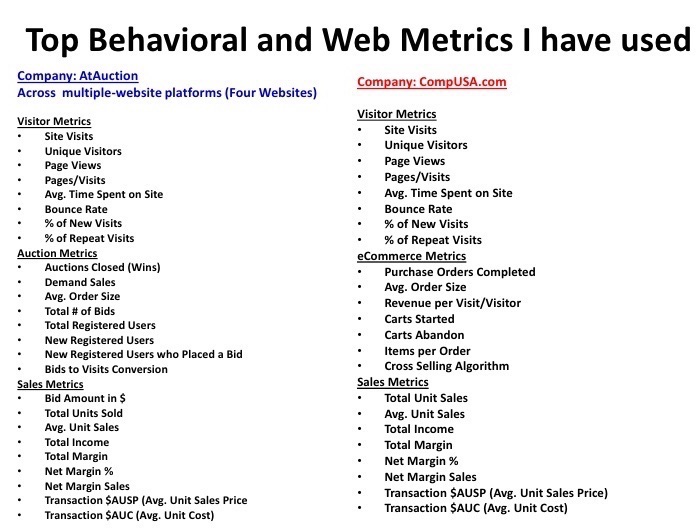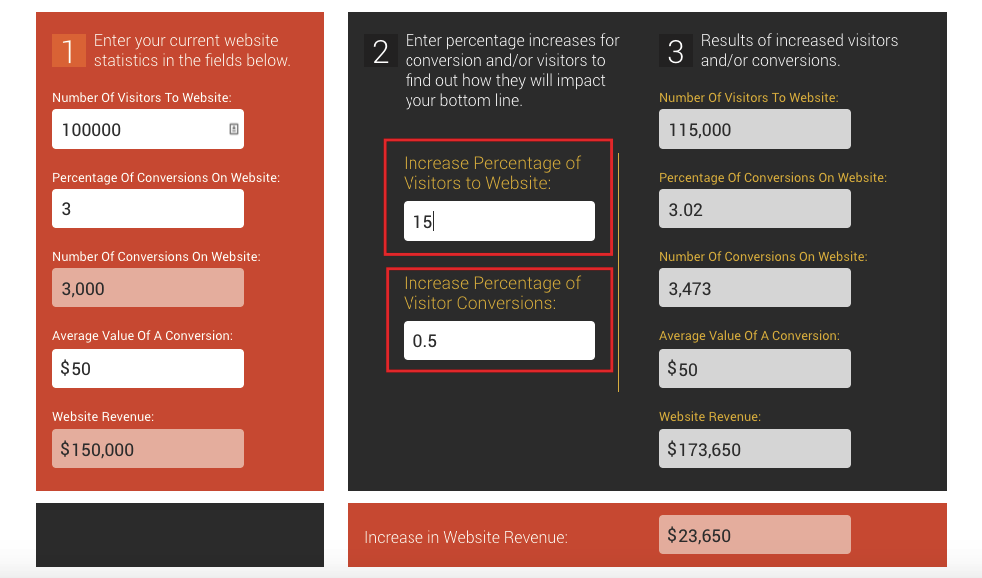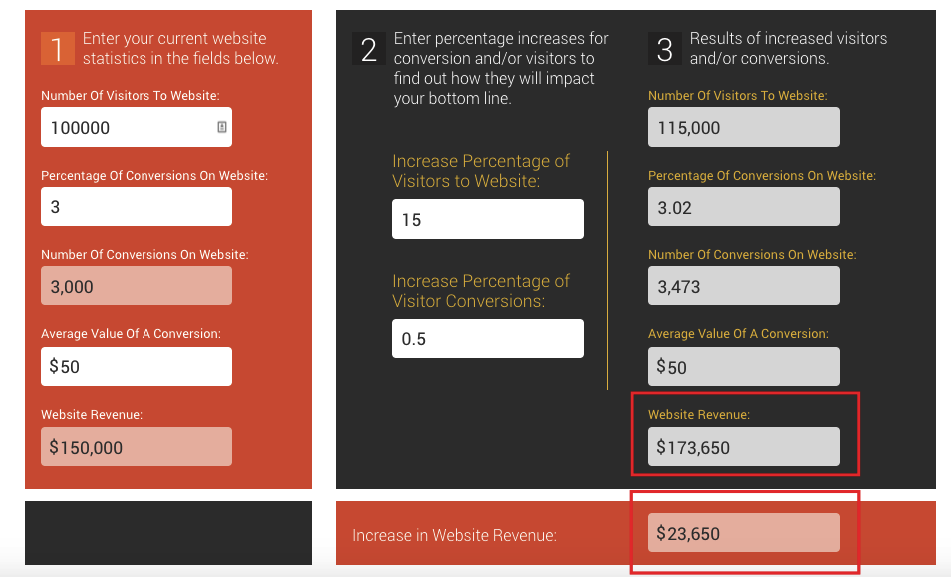Digital marketing is a blessing to marketers because of the wealth of data it provides.
Online marketers can analyze and dissect innumerable elements to gain a deeper understanding of the habits and preferences of their customers.
As a result, they can effectively put themselves in their customers’ shoes and optimize the entire experience. This allows them to fine-tune even the most minute aspects of their campaign, thereby improving customer satisfaction and increasing sales.
But this also creates of a quandary. With such an abundance of data points available, it can be a little perplexing deciding which behavioral metrics to focus on.
So, what do you do?
In this article, I attempt to answer the question by suggesting seven of the most important behavioral metrics that drive business.
What Behavioral Metrics Should Marketers Focus On?
Sometimes, the sheer volume of behavioral metrics can feel paralyzing. Just look at this list of examples provided by Scott Roever of CompUSA:
And here’s some more:
See what I mean?
Things can get murky in a hurry. So which behavioral metrics most demand your attention?
Obviously, it can definitely vary from company to company, but it all boils down to answering a single crucial question — what behavioral metrics impact your key business drivers?
For most businesses, there are three key business drivers in play:
- Revenue
- Active users (for SaaS companies)
- Customer loyalty (for Ecommerce companies)
Here’s how to go about mapping behavioral metrics into these key business drivers.
Revenue
There are two behavioral metrics that heavily impact revenue.
Conversion rate and churn.
Conversion rate influences your ROI and overall bottom line.
It’s also what allows you to benchmark your website month-to-month and year-to-year to track long-term progress.
Therefore, it’s arguably the most important metric to examine pound-for-pound.
One of the simplest tools for determining how your conversion rate directly impacts your revenue is this one from Foremost Media:
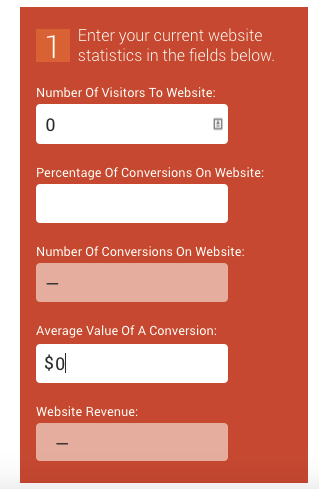
It’s pretty straightforward.
Enter the average number of visitors to your website each month, the percentage of visitors that convert and the average value of a conversion.
Here’s an example:
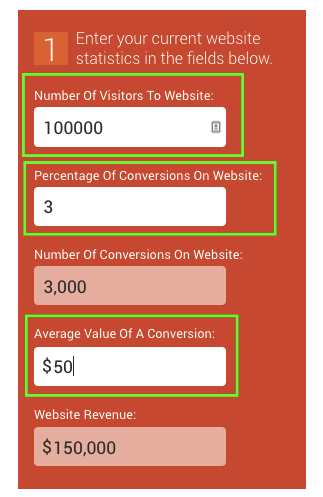
In this case, website revenue would be $150,000.
But you can take it one step further.
If you’re wondering how much your revenue would increase by increasing traffic, increasing your conversion rate or both, you can do it with ease.
Just type in the increase in percentage of traffic and/or increase in conversion rate.
Let’s say, I’m able to increase traffic by 15 percent and increase conversions by 0.5 percent.
Here’s what I get:
This tells me that these improvements would take my website revenue from $150,000 to $173,650 – an increase of $23,650.
By following this simple formula, you can see exactly how your conversion rate is affecting revenue.
As for calculating churn, it can get pretty complicated and depends on a myriad of factors like how you count customers, time frame, customer segments and so on.
ProfitWell even goes so far as to say that there are 43 different ways to calculate SaaS churn.
But when broken down in its simplest form, the formula looks like this:

It’s important to note that churn is inevitable and is bound to occur in nearly every business.
What’s important is that you have an acceptable churn rate.
So…what’s considered “acceptable?”
Hate to say it, but it just depends.
I like the answer that David Mytton of Server Density wrote on Quora:
You can’t just pick a number and say “this is what churn should be” because it depends entirely on your customer segment.
This is a guy who knows that segmentation is crucial. Any churn rate that excludes customer segmentation from the equation is most likely misguided.
Mytton does, however, admit that it’s helpful to have benchmarks. He provides these:

Lincoln Murphy of Sixteen Ventures suggests than an acceptable churn rate is in the 5-7% range annually or 0.42 – 0.58 percent monthly. According to Murphy, “Companies with acceptable churn only lose about 1 out of every 200 customers (or dollars) per month.”
In my experience, this sets the standard way too high.
Churn happens, regardless of how amazing your customer service, how flawless your product, or how perfect your price point is.
But there are holes that should be plugged. If left unchecked, an exorbitant churn rate will erode your revenue.
If you’re staring at an alarming churn rate — whatever that might be for your vertical and segment — start taking action immediately.
Active Users (SaaS)
When it comes to SaaS companies, they’ll want to keep a close eye on their number of active users at any given time.
This is perhaps the best indicator of engagement and shows how many users are actually using their product on a consistent basis.
Of course, the term “active” is inherently nebulous and can be defined in a variety of ways.
Pipz Automation even calls active users a vanity metric saying that it’s too black and white to identify a user as active or inactive with nothing in between.
Although it’s an interesting argument, and determining “activeness” can depend on a variety of factors as well as the industry in question, I feel there are some concrete ways to identify active users.
So let’s get right down to it.
Logins
Perhaps the most obvious and universal is logins.
Facebook has a super simple way of defining active users, which primarily hinges upon logging in. You don’t need to Like, Comment, or use any feature to be counted as active. Just login.
We define a daily active user as a registered Facebook user who logged in and visited Facebook through our website or a mobile device, or used our Messenger application (and is also a registered Facebook user), on a given day.
If a user doesn’t do this within a 30 day period, they’re marked as inactive.
This is a means of identifying users that pretty much any SaaS company can do with ease.
Pipz Automation makes another interesting point by saying, “For all you know, ‘inactive users’ could be on vacation, or their business could be passing through a slow sales season, so they don’t have the need to login on your product for a while.”
While this is definitely food for thought, I still think that examining logins is one of the most straightforward ways to gauge active users.
Session Duration
Another factor to take into account is how long a user is logged in.
Having someone logged in for 10 minutes would be favorable to someone only being logged in for 2 minutes.
Although anyone who logs in would be considered as an active user, you would assign more value to someone who stays logged in for longer.
The longer your average session duration is, the better.
Using Features
This is the second metric that Facebook (and many companies) use after logins.
Of course the specific type of features used can vary widely, seeing that a user is accessing key features is obviously a sign that they’re active.
For instance, Ahrefs might take a look at which specific features users were accessing most frequently from their dashboard.
![]()
You’ll probably also want to classify some features as being more important than others.
For example, you might assign more value to someone taking the time to fill out their profile rather than checking for notifications.
This would show that they’re engrossed in your software, which is a good sign.
Creating a CEI
A customer engagement index (CEI) is a way to gain even more comprehensive insights into user activity. It is sometimes also known as customer engagement score.
It involves assigning different values to a user’s actions, which ultimately gives you a snapshot of overall user engagement.
This ends up being quite helpful for determining just how active your users are on the whole.
Customer Loyalty (Ecommerce)
Finally there’s the matter of customer loyalty.
This affects everything from revenue and brand equity to the long-term sustainability of your business and how competitive you are in your industry.
You’ve probably heard something like, “It can cost five times more to acquire new customers than it does to keep current ones.”
This is a good quote that shows why companies are so concerned with customer loyalty.
But here are some other interesting statistics that demonstrate the full impact of having loyal customers.
- “61 percent of SMBs report that more than half of their revenue comes from repeat customers, rather than new business.”
- “On average, loyal customers are worth up to 10x as much as their first purchase.”
- “A five percent increase in customer retention can increase a company’s profitability by 75 percent.”
When it comes to using behavioral metrics to determine customer loyalty, looking at repurchases is usually your best bet.
If a customer is compelled to purchase multiple products from your company, it indicates at least a base level of loyalty.
They like your brand enough and have had at a pleasant enough experience to buy from you again.
The more purchases a single customer makes correlates into stronger loyalty.
When it comes to a repeat purchase rate formula, it’s really quite simple. Here’s how to calculate it:
So if out of 100 customers,15 have shopped with you previously, you would have a repeat rate of 15 percent.
Calculating your retention rate is one of the most effective ways to gauge the collective loyalty of your customers and determine if any adjustments need to be made.
Conclusion
The key business drivers I mentioned – revenue, active users and customer loyalty – contribute most heavily to your company’s bottom line.
There are of course a multitude of factors to take into account, but I feel that these three are most pertinent in the grand scheme of things.
Diagnosing the health of these key business drivers revolves around identifying which behavioral metrics impact them the most.
To recap it’s these:
- Conversion rate and churn for revenue
- Logins, session duration and using features for active users
- Repeat purchases for customer loyalty
By analyzing these elements, you should be able to determine both your strengths and weaknesses so you can ultimately take measures to optimize your site and ultimately improve your bottom line.
What do you think is the number one most important business driver?
About the Author: Daniel Threlfall is an Internet entrepreneur and content marketing strategist. As a writer and marketing strategist, Daniel has helped brands including Merck, Fiji Water, Little Tikes, and MGA Entertainment. Daniel is co-founding Your Success Rocket, a resource for Internet entrepreneurs. He and his wife Keren have four children, and occasionally enjoy adventures in remote corners of the globe (kids included). You can follow Daniel on Twitter or see pictures of his adventures on Instagram.

